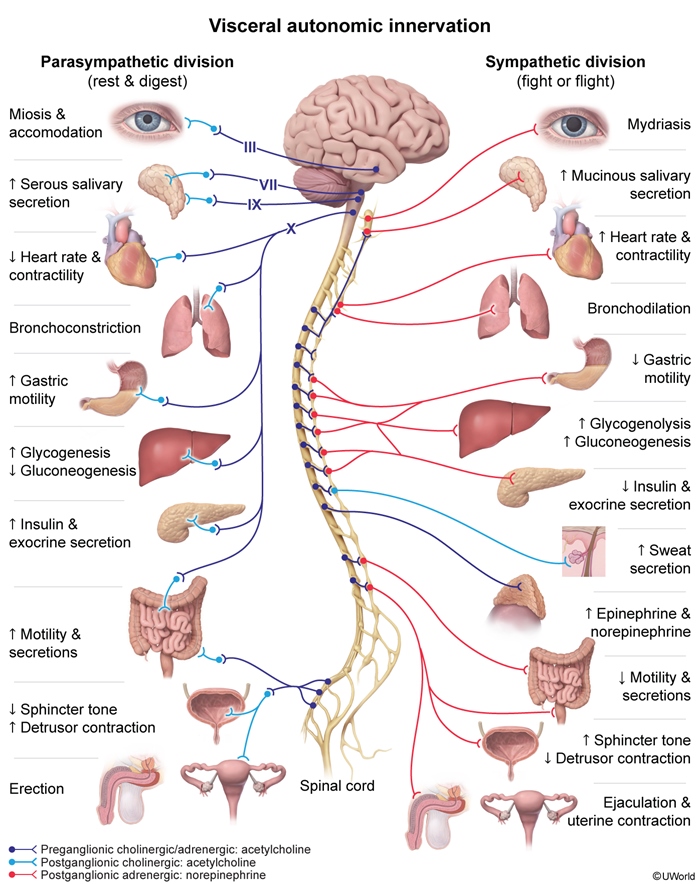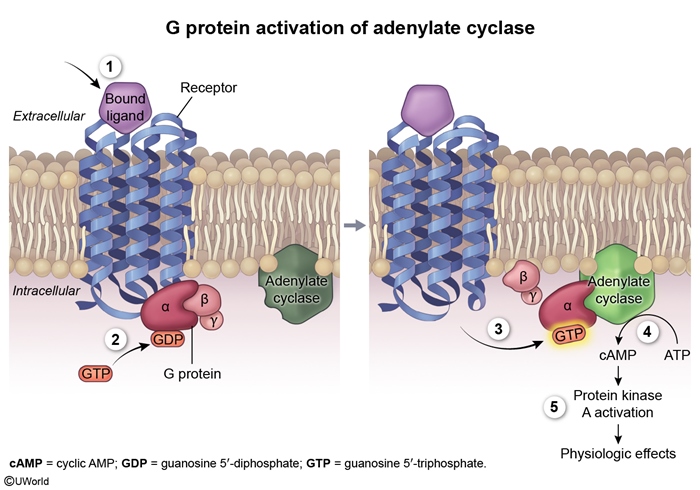Autonomic Nervous System
Article Sections
Introduction
The autonomic nervous system controls most of the visceral functions of the body, including regulation of circulation, digestion, and urination. It has 2 complementary components with opposite effects:
- The sympathetic nervous system (fight or flight response).
- The parasympathetic nervous system (rest and digest response).
Specialized portions of the CNS react to inputs from peripheral receptors (eg, baroreceptors, chemoreceptors) and transmit outputs that respond to changes in the environment and help maintain physiologic stability.
Overview
The output from the sympathetic and parasympathetic nervous systems travels from the CNS along a preganglionic neuron and is transmitted to a postganglionic neuron (Figure 1). The features of each system are as follows:
Sympathetic nervous system- The preganglionic neuron travels from the spinal cord to the nearby sympathetic chain
Continue Learning with UWorld
Get the full Autonomic Nervous System article plus rich visuals, real-world cases, and in-depth insights from medical experts, all available through the UWorld Medical Library.
Figures

